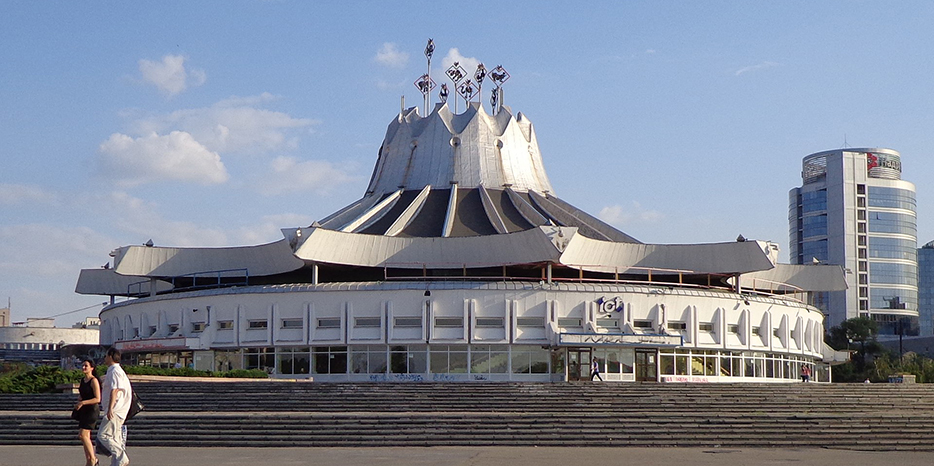The “Museum of Jewish Memory and the Holocaust in Ukraine,” marking International Circus Day, reminded the public about the Jewish contribution to the circus in Dnipro, which is associated not only with the renowned architect Pavlo Nirinberg. He designed not only the modern circus building—now a symbol of the city—but also a number of other key architectural landmarks in Dnipro.
The museum’s deputy director, Dr. Yehor Vradii, spoke about the Jewish influence on the local circus dating back to the 19th century: “The circus tradition goes back to the early 19th century, and its original location was not where the modern circus now stands on Sicheslavska Embankment.
In the 1830s–1840s, significant changes took place near the intersection of today’s Dmytro Yavornytskyi Avenue and Juliusz Słowacki Street. Since the late 1790s, the site now occupied by the Dnipro Academic Opera and Ballet Theatre housed the Katerynoslav provincial prison, and the surrounding area was known as Ostroh Square. By the late 1830s, the outdated prison was demolished and a new one was built slightly to the south.
The vacant lot left by the demolished prison became a site for primitive wooden amusements accessible to people of all social classes. The area’s purpose changed, and it was renamed Swing Square.
It became the designated spot in Katerynoslav for traveling circus troupes to pitch their temporary tents. In 1885, at the invitation of Jewish circus performer and later impresario Albert Salomonsky (1839–1913), an Italian-born artist, the Italian troupe led by Gigetto Truzzi (1865–1925), a member of a famous circus dynasty, arrived in the city. For their performances, Salomonsky financed a massive chapiteau tent, essentially founding a permanent circus in the city. The partnership between these two men from the Apennines, along with the Truzzi family’s circus connections, helped bring top circus stars to Katerynoslav. However, by the early 20th century, the tent no longer matched the standards of stationary circuses Salomonsky had built elsewhere in the empire.
In 1911, the Katerynoslav circus relocated to the Lake Square area. The builders of the new arena followed modern standards, including ring dimensions used in leading European and global circuses. During World War I in 1915, the circus hosted a wrestling championship featuring legendary athlete and performer Ivan Poddubny (1871–1949), a native of Poltava.
Under the Bolsheviks, the circus building was repeatedly repurposed and was damaged during WWII bombings. Although partially restored, in 1960 the city decided to construct a new building on the same site, which served audiences until 1980, when the current Dnipro Circus building was ceremonially opened.
P.S. Interestingly, in 1957 the Soviet film The Wrestler and the Clown (dir. Kostiantyn Yudin and Boris Barnet) premiered, set in the early 20th-century Odessa circus. Real historical figures associated with the Dnipro circus appear in the film. The main characters are Ivan Poddubny and renowned trainer and clown Anatoliy Durov (1864–1916). While they evoke sympathy and admiration, Giuseppe Truzzi and “the German” Albert Salomonsky are portrayed as cynical businessmen of the circus world.”
Full article with academic references can be found here




